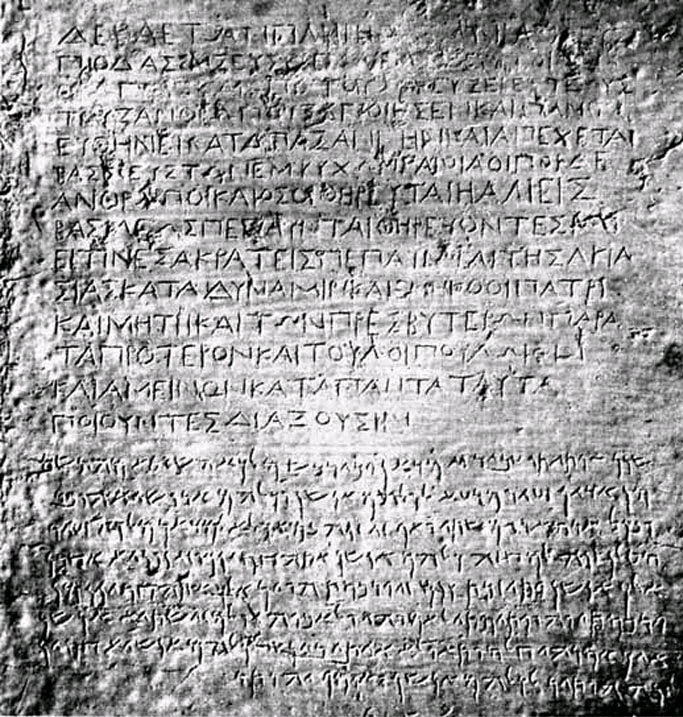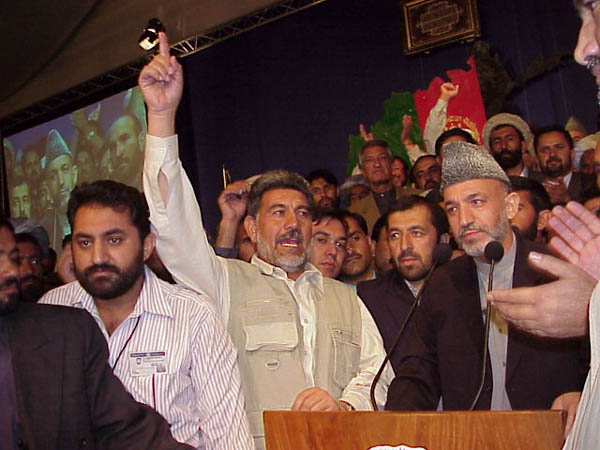|
Tomb Of Timur Shah Durrani
The tomb of Timur Shah Durrani (''Maqbara-i-Timur Shah'') is located in Kabul and was built in 1815. It is the mausoleum of Timur Shah Durrani, who was the second ruler of the Durrani Empire, from 1772–1793. In 1776 Timur Shah chose Kabul as the capital of Afghanistan, which was Kandahar until then. Although he died in 1793 in Char Bagh, it wasn't until years later that the tomb was built. Timur Shah was later buried in here. The mausoleum was heavily damaged during the Afghan Civil War. The building and its gardens were fully restored with the aid of the Aga Khan Development Network in 2012. On 19 October 2012, Hamed Karzai, president at the time re-opened the mausoleum. See also * Tomb of Ahmad Shah Durrani The Tomb of Ahmad Shah Durrani is located in Kandahar, Afghanistan. It is the most important historical monument in Kandahar. Ahmad Shah Durrani, fondly known as Ahmad Shah Baba, Father of Afghanistan, ruled an empire from Kandahar from 1747-177 ... References Ex ... [...More Info...] [...Related Items...] OR: [Wikipedia] [Google] [Baidu] |
Kabul
Kabul (; ps, , ; , ) is the capital and largest city of Afghanistan. Located in the eastern half of the country, it is also a municipality, forming part of the Kabul Province; it is administratively divided into 22 municipal districts. According to late 2022 estimates, the population of Kabul was 13.5 million people. In contemporary times, the city has served as Afghanistan's political, cultural, and economical centre, and rapid urbanisation has made Kabul the 75th-largest city in the world and the country's primate city. The modern-day city of Kabul is located high up in a narrow valley between the Hindu Kush, and is bounded by the Kabul River. At an elevation of , it is one of the highest capital cities in the world. Kabul is said to be over 3,500 years old, mentioned since at least the time of the Achaemenid Persian Empire. Located at a crossroads in Asia—roughly halfway between Istanbul, Turkey, in the west and Hanoi, Vietnam, in the east—it is situated in ... [...More Info...] [...Related Items...] OR: [Wikipedia] [Google] [Baidu] |
Timur Shah Durrani
Timur Shah Durrani (; prs, ;), also known as Timur Shah Abdali or Taimur Shah Abdali (December 1746 – May 20, 1793) was the second ruler of the Afghan Durrani Empire, from November 1772 until his death in 1793. An ethnic Pashtun, he was the second eldest son of Ahmad Shah Durrani. Timur Shah would prominently be the governor of many cities in Punjab for the Durrani Empire, however usually forced out after Sikh armies would defeat him in battle. Timur Shah's reign would began after the death of his father, Ahmad Shah Durrani. This event would place the Durrani Empire into disarray, as multiple combatants would begin fighting for power, Timur Shah led a successful campaign against a coalition his brother, Humayun Mirza had made, securing power for himself. His prominent reign would see the Durrani Empire being held through tough times, Timur Shah also notably changed the capital of the Durrani Empire from Kandahar to Kabul, which is what would affect the state of modern Afghanis ... [...More Info...] [...Related Items...] OR: [Wikipedia] [Google] [Baidu] |
Durrani Empire
The Durrani Empire ( ps, د درانيانو ټولواکمني; fa, امپراتوری درانیان) or the Afghan Empire ( ps, د افغانان ټولواکمني, label=none; fa, امپراتوری افغان, label=none), also known as the Sadozai Kingdom ( ps, سدوزي ټولواکمني, label=none; fa, دولت سدوزایی, label=none), was an Afghan empire that was founded by Ahmad Shah Durrani in 1747 and spanned parts of Central Asia, the Iranian plateau, and the Indian Subcontinent . At its largest territorial extent, it ruled over the present-day Afghanistan, Pakistan, parts of northeastern and southeastern Iran, eastern Turkmenistan, and northwestern India. Next to the Ottoman Empire, the Durrani Empire is considered to be among the most impactful Muslim empires of the latter half of the 18th century. Ahmad was the son of Muhammad Zaman Khan (an Afghan chieftain of the Abdali tribe) and the commander of Nader Shah Afshar. Following Afshar's death ... [...More Info...] [...Related Items...] OR: [Wikipedia] [Google] [Baidu] |
Kandahar
Kandahar (; Kandahār, , Qandahār) is a city in Afghanistan, located in the south of the country on the Arghandab River, at an elevation of . It is Afghanistan's second largest city after Kabul, with a population of about 614,118. It is the capital of Kandahar Province as well as the de facto capital of the Taliban, formally known as the Islamic Emirate of Afghanistan. It also happens to be the centre of the larger cultural region called Loy Kandahar. In 1709, Mirwais Hotak made the region an independent kingdom and turned Kandahar into the capital of the Hotak dynasty. In 1747, Ahmad Shah Durrani, founder of the Durrani dynasty, made Kandahar the capital of the Afghan Empire. Historically this province is considered as important political area for Afghanistan revelations. Kandahar is one of the most culturally significant cities of the Pashtuns and has been their traditional seat of power for more than 300 years. It is a major trading center for sheep, wool, cotton, silk, fel ... [...More Info...] [...Related Items...] OR: [Wikipedia] [Google] [Baidu] |
Char Bagh
Char Bagh is an area within Laghman Province, Afghanistan and is observable from the Jalalabad- Kabul Road. History According to some sources, when Alexander the Great entered the region, he built a town between Char Bagh and Mandrawar after the Greek god of victory. See also * Cophen campaign References Laghman Province History of Laghman Province Hellenistic sites in Afghanistan {{Laghman-geo-stub ... [...More Info...] [...Related Items...] OR: [Wikipedia] [Google] [Baidu] |
Afghan Civil War (1992-96)
War in Afghanistan, Afghan war, or Afghan civil war may refer to: * Conquest of Afghanistan by Alexander the Great (330 BC – 327 BC) * Muslim conquests of Afghanistan (637–709) *Conquest of Afghanistan by the Mongol Empire (13th century), see also Mongol invasion of Central Asia (1216–1222) * Mughal conquests in Afghanistan (1526) *Afghan Civil War (1863–1869), a civil war between Sher Ali Khan and Mohammad Afzal Khan's faction after the death of Dost Mohammad Khan * Anglo−Afghan Wars (first involvement of the British Empire in Afghanistan via the British Raj) ** First Anglo−Afghan War (1839–1842) ** Second Anglo−Afghan War (1878–1880) ** Third Anglo−Afghan War (1919) * Panjdeh incident (1885), first major incursion into Afghanistan by the Russian Empire during the Great Game (1830–1907) with the United Kingdom of Britain and Ireland * First Afghan Civil War (1928–1929), revolts by the Shinwari and the Saqqawists, the latter of whom managed to take o ... [...More Info...] [...Related Items...] OR: [Wikipedia] [Google] [Baidu] |
Aga Khan Development Network
The Aga Khan Development Network (AKDN) is a network of private, non-denominational (de jure) development agencies founded by the Aga Khan that work primarily in the poorest parts of Asia and Africa. Aga Khan IV succeeded to the office of the 49th hereditary Imam as spiritual and administrative leader of the Shia faith-rooted Nizari Ismaili Muslim supranational union in 1957. Ismailis consist of an estimated 25–30 million adherents (about 20% of the world's Shia Muslim population). The network focuses on health, education, culture, rural development, institution building and the promotion of economic development. The AKDN aims to improve living conditions and opportunities for the poor, without regard to their faith, origin or gender. Its annual budget for not-for-profit activities is approximately US $ 950 million – mainly in Africa, Asia, and the Middle East. The AKDN works in 30 countries around the world, and it employs approx 96,000 paid staff, mostly in developing count ... [...More Info...] [...Related Items...] OR: [Wikipedia] [Google] [Baidu] |
Hamid Karzai
Hamid Karzai (; Pashto/ fa, حامد کرزی, , ; born 24 December 1957) is an Afghan statesman who served as the fourth president of Afghanistan from July 2002 to September 2014, including as the first elected president of the Islamic Republic of Afghanistan from December 2004 to September 2014. He previously served as Chairman of the Afghan Interim Administration from December 2001 to July 2002. He is the chief (''khān'') of the Popalzai Durrani tribe of Pashtuns in Kandahar Province. Born in Kandahar, Karzai graduated from Habibia High School in Kabul and later received a master's degree in India in the 1980s. He moved to Pakistan where he was active as a fundraiser for the Afghan rebels during the Soviet–Afghan War (1979–1989) and its aftermath. He briefly served as Deputy Foreign Minister in the Islamic State of Afghanistan government. In July 1999, Karzai's father was assassinated and Karzai succeeded him as head of the Popalzai tribe. In October 2001 ... [...More Info...] [...Related Items...] OR: [Wikipedia] [Google] [Baidu] |
Tomb Of Ahmad Shah Durrani
The Tomb of Ahmad Shah Durrani is located in Kandahar, Afghanistan. It is the most important historical monument in Kandahar. Ahmad Shah Durrani, fondly known as Ahmad Shah Baba, Father of Afghanistan, ruled an empire from Kandahar from 1747-1772. The graceful octagonal monument stands on a basaltic platform, the plain beige brick exterior decorated with numerous niches of contrasting heights and depths, delicately outlined with yellow and green, green and blue, tile. Tall minarets connected by a floral balustrade top the main body of the monument and behind them yet another set of short minarets atop a series of shallow niches outlined in blue, surround a drum crowned with a dome of glistening blue tile. The soffits of the main arches are cleverly decorated in a honeycomb pattern composed of half circles centered with lapis lazuli and gold to resemble flowers.Nancy Hatch Dupree – An Historical Guide To Afghanistan – ''The South (Chapter 16)'' The exterior decoration seems v ... [...More Info...] [...Related Items...] OR: [Wikipedia] [Google] [Baidu] |
Buildings And Structures In Kabul
A building, or edifice, is an enclosed structure with a roof and walls standing more or less permanently in one place, such as a house or factory (although there's also portable buildings). Buildings come in a variety of sizes, shapes, and functions, and have been adapted throughout history for a wide number of factors, from building materials available, to weather conditions, land prices, ground conditions, specific uses, prestige, and aesthetic reasons. To better understand the term ''building'' compare the list of nonbuilding structures. Buildings serve several societal needs – primarily as shelter from weather, security, living space, privacy, to store belongings, and to comfortably live and work. A building as a shelter represents a physical division of the human habitat (a place of comfort and safety) and the ''outside'' (a place that at times may be harsh and harmful). Ever since the first cave paintings, buildings have also become objects or canvasses of much artisti ... [...More Info...] [...Related Items...] OR: [Wikipedia] [Google] [Baidu] |






